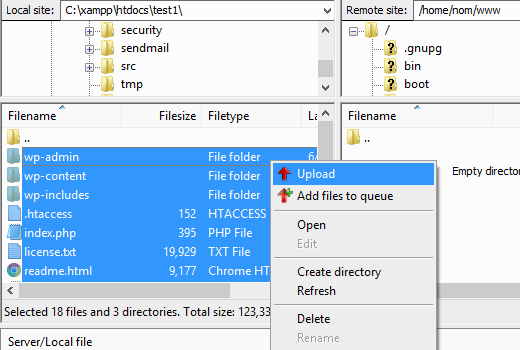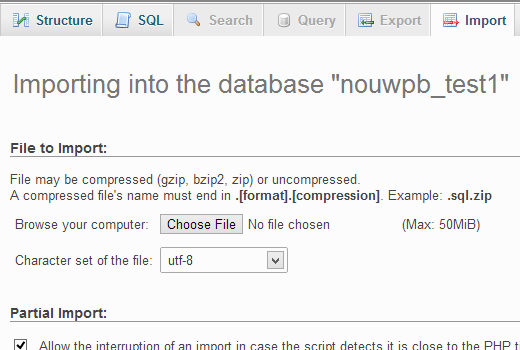Did you know that you can install WordPress on your personal computer for learning and testing purposes. The process of installing WordPress on your personal computer is also known as setting up a local server environment or localhost. Often theme designers and plugin developers install WordPress on a local server environment to speed up their development process. An average user can use the local server environment to test plugins and/or make changes to the site before making it live for their audiences. In this article, we will show you how to install WordPress on your Windows computer using WAMP.
The video above will give you detailed steps from start to finish on how to install WAMP and WordPress until you are able to run your site on your local machine.
What is WAMP?
WAMP or WampServer is a compilation of Apache web server, PHP and MySQL bundled for Windows computers. Basically, you need WAMP to setup your own local server environment and install WordPress on Windows. There are other clients for Windows such as XAMPP, but we use and recommend WAMP. It is free and easy to use.
How to Move WordPress From Local Server to Live Site
Developing a WordPress site locally can help speed up the development process. Once you have finished the development on localhost, the next step is to move the site live. In this article, we will show you how to move WordPress from local server to a live site. By using this process, you would be able to migrate all of your content (posts, pages, images, etc), themes, as well as plugins from local server to a production site.
Before we start, we must let you know that you can make this migration from local server to a live site easier by using one of the two plugins: BackupBuddy or Duplicator. However to make the process easy for us, we rely on BackupBuddy when we do this on a day to day basis.
Pre-Steps
In order for you to migrate your locally developed WordPress site to a live server, you need to have two things. First is the local server. We are assuming that you have a WordPress site running on local server, and you have full access to it. Next, you would need to have web hosting that supports WordPress, so you can migrate your content over.
You would need to have a FTP program and know how to use FTP, so you can upload your content to the live site.
Note: the screenshots used in this article are from WordPress hosting providers that have cPanel.
Step 1: Export Local WordPress Database
First thing you need to do is export your local WordPress database. We will be using phpMyAdmin to do that. If you are unfamiliar with it, then you might want to take a look at our guide to WordPress database management using phpMyAdmin. Simply go to http://localhost/phpmyadmin/ and click on your WordPress database. Next, click on the Export button from the top menu bar.

In the Export Method option choose custom, which will provide you with more options to export your database. Select all tables to export and gzipped for compression. Scroll down to the bottom of the page and press the Go button to download your database.
Step 2: Uploading WordPress Files to Live Site
Now open an FTP client and connect to your live site. Once you are connected to your live site, make sure you upload the files in the right directory. For example if you want the site to be hosted on yoursite.com, then you would want to upload all files in your public_html directory.
Now select your local WordPress files and upload them to your live server.

Step 3: Creating MySQL Database on Live Site
While your FTP client is uploading your WordPress files, you can spend this time on importing your database to the live server. Most WordPress hosting providers offer cPanel to manage your hosting account, so we will show you how to create a database using cPanel. Log in to your cPanel dashboard and click on the MySQL databases icon which can be found in the databases section.

On the next screen, create a database by entering a name for your database.

After creating a database, scroll down to MySQL users section and create or add an existing user to the database. After adding the user, cPanel will take you to set MySQL privileges for that user. Simply grant all privileges to the user.

Step 4: Importing WordPress Database on Live Site
Next step in the process is to import your WordPress database. Go to your cPanel dashboard, scroll down to the databases section and click on phpMyAdmin. This will take you to phpMyAdmin where you want to click on the database you created earlier. phpMyAdmin will show your new database with no tables. Click on theImport tab in the top menu. On the import page, click on choose file button and then select the gzipped database file you saved in step 1. Lastly, press the Go button at the bottom of the page. phpMyadmin will now import your WordPress database.

Step 5: Changing the Site URL
Now you need to change the site URL, so you can setup your live WordPress site. In your phpMyAdmin, look for the wp_options table in your database that we just imported in step 4. If you changed your database prefix, then instead of wp_options it might be {prefix}_options.
Click on the browse button next to wp_options or the link that you see in the sidebar to open the page with a list of fields within the wp_options table. See screenshot below:

Under the field options_name, you need to look for siteurl. Click the Edit Field icon which can be found at the far left at the beginning of the row.

When you click the edit field, an edit field window will appear. In the input box for option_value, you will see the URL of your local install probably something like:http://localhost/alltech. Carefully insert your new site url in this field, for example: http://www.alltech.co.ke
Save the field by clicking the Go button.
Next, you need to replicate this step for the option name: home. The wp_options page can be a few pages long, so simply find the home tab. Usually it is on the second page which you can navigate to by clicking on the pagination arrows in phpMyAdmin.
Update the home url to be the same as your siteurl.
Step 6: Setting Up your Live Site
Now that we have imported the database, and all of our content should be uploaded, it is time to configure WordPress. At this time, your site should be showing an Error Establishing Database Connection error. To fix this, connect to your website using an FTP client and edit wp-config.php file. Provide the database name, user and password you created earlier in Step 3. Save the wp-config.php file and upload it back to your server. Visit your website, and it should be live now.
Login to your WordPress admin panel, and go to Settings » General. Click save Options. This will ensure that the site url is corrected anywhere else that needs to be.
Then go to Settings » Permalink and click Save to ensure that all post links are working fine.
Step 7: Fixing Images and Broken Links by updating Paths
Whenever you are moving a WordPress site from one domain to another, or from local server to a live site, you would face broken links and missing images issue. You can either use the SQL query or use the Velvet Blues WordPress plugin.
For those who want to do it via SQL, here is a simple SQL query that should solve this problem:
1 |
UPDATE wp_posts SET post_content = REPLACE(post_content,'localhost/test/', 'www.yourlivesite.com/'); |
Simply go to phpMyAdmin, click on your database and then click on SQL from top menu. Write this query but don’t forget to change it with your own local site and live site URLs.

For more detailed information you can visit this site: http://www.wpbeginner.com
